Lamplight from the Oak’s Cavern.
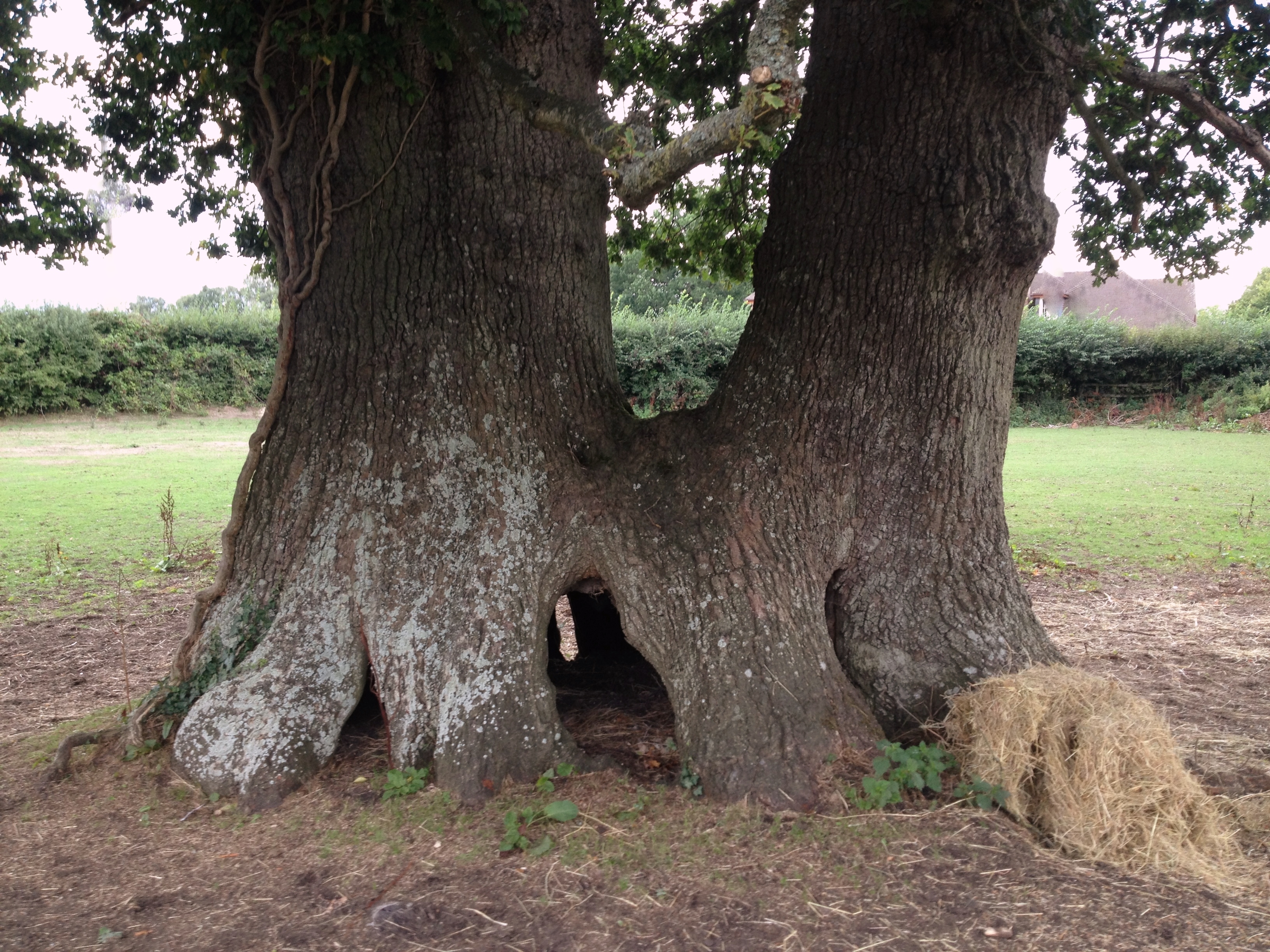
It was the glow emanating from within the Horse Field Oak that made me stop and reappraise it. A lamplight glow that kept catching my eye as I worked; the sort of glow you might expect on opening a treasure chest, hauled from the deep.
This much-loved tree stands in the small, open pasture as a focal point. Twice every day, unless wind or weather is bad, we feed the horses beneath it, in ‘mangers’ created by the bays of its great, raised roots. Sometimes, we’ll store things on the dry earthy floor of its centre – a rug, a headcollar, a jumper; a book.
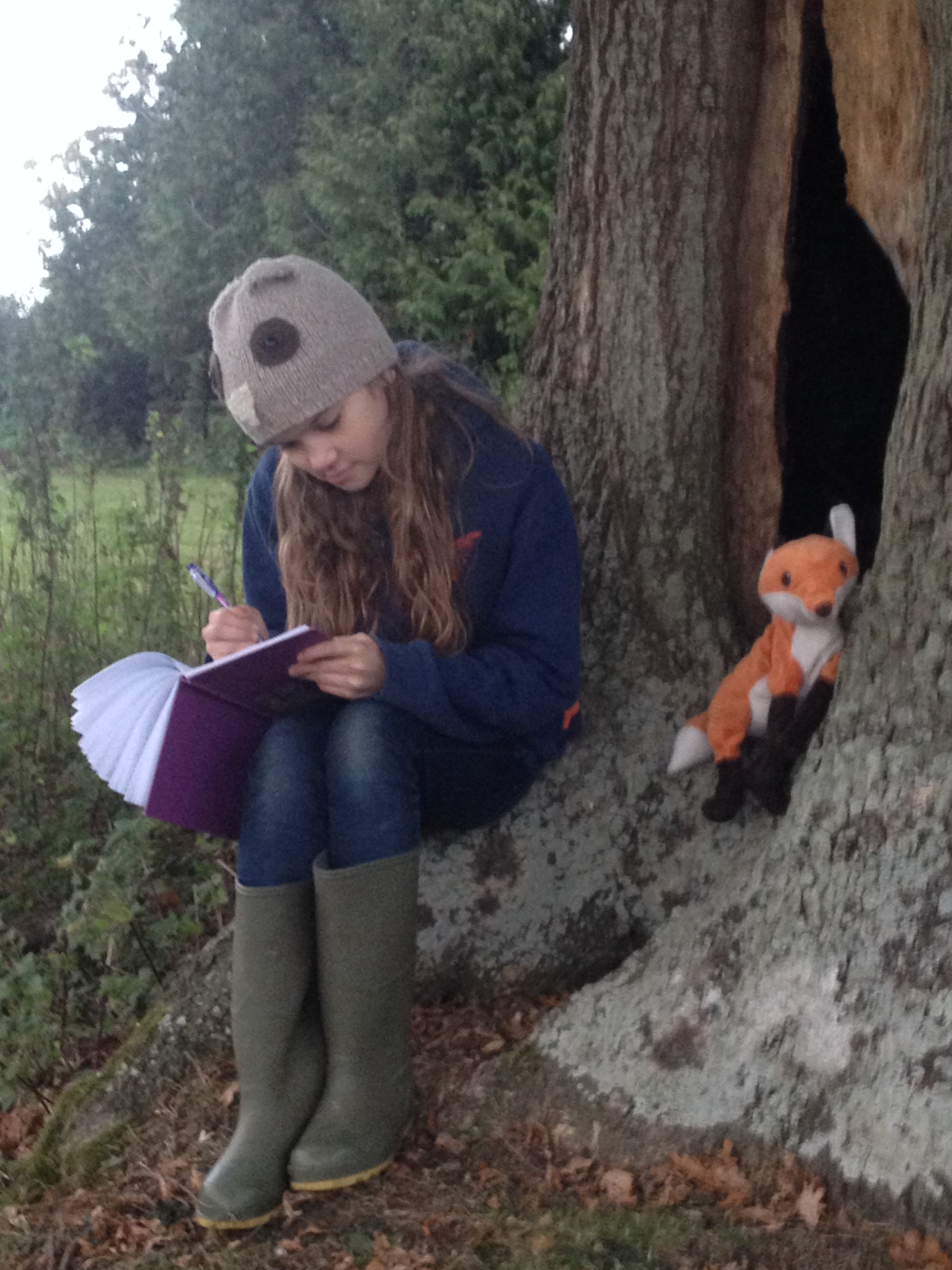
Its double-trunk and large, healthy crown of leaves gives it a deceptive youthfulness. A big buttress base (an oak wall 1.5m high) gives way to two separate trunks; each in themselves of impressive, ancient size. So, although it was always obvious that the ‘two trees’ sprung from one, there was an impression of a pair, joined at the hip.
The base is hollow. The tree stands up on its toes, like an earthstar fungus raising its middle off the floor, or as if it has legs – we sometimes call it ‘the walking tree’. The cavernous trunk is like a small cart shed, with wooden pillars, bays and open doors. The floor is dry-dusted, threshed with husks and wisped with rolled hay; the roof is vaulted, hushed and dark. Motes float in wide light shafts falling between cloisters.
The children have each had their dens inside, but now, even the youngest is too big to squeeze through the narrow opening, with its pelmet of pale, insect-drilled wood. A fox wintered in it last year and rabbits have their kits inside in summer. Part of the inside is burnt out: for a time, the hollow had been a secret bottle dump and presumably, the intensity of an afternoon sun had caused a small fire, mercifully gone out.
When I peer inside, to see what the yellow light is, a huge, sulphur shelf fungus is hanging there, like a ruffled lampshade from the 1970s. It glows in the upper-dark of the interior. Also known as chicken-of-the-woods, the fungus has more Flamenco frills than a fifties petticoat. The decayed hollow of the tree is an entirely natural process, the central heartwood being a dead support, and host to much life.
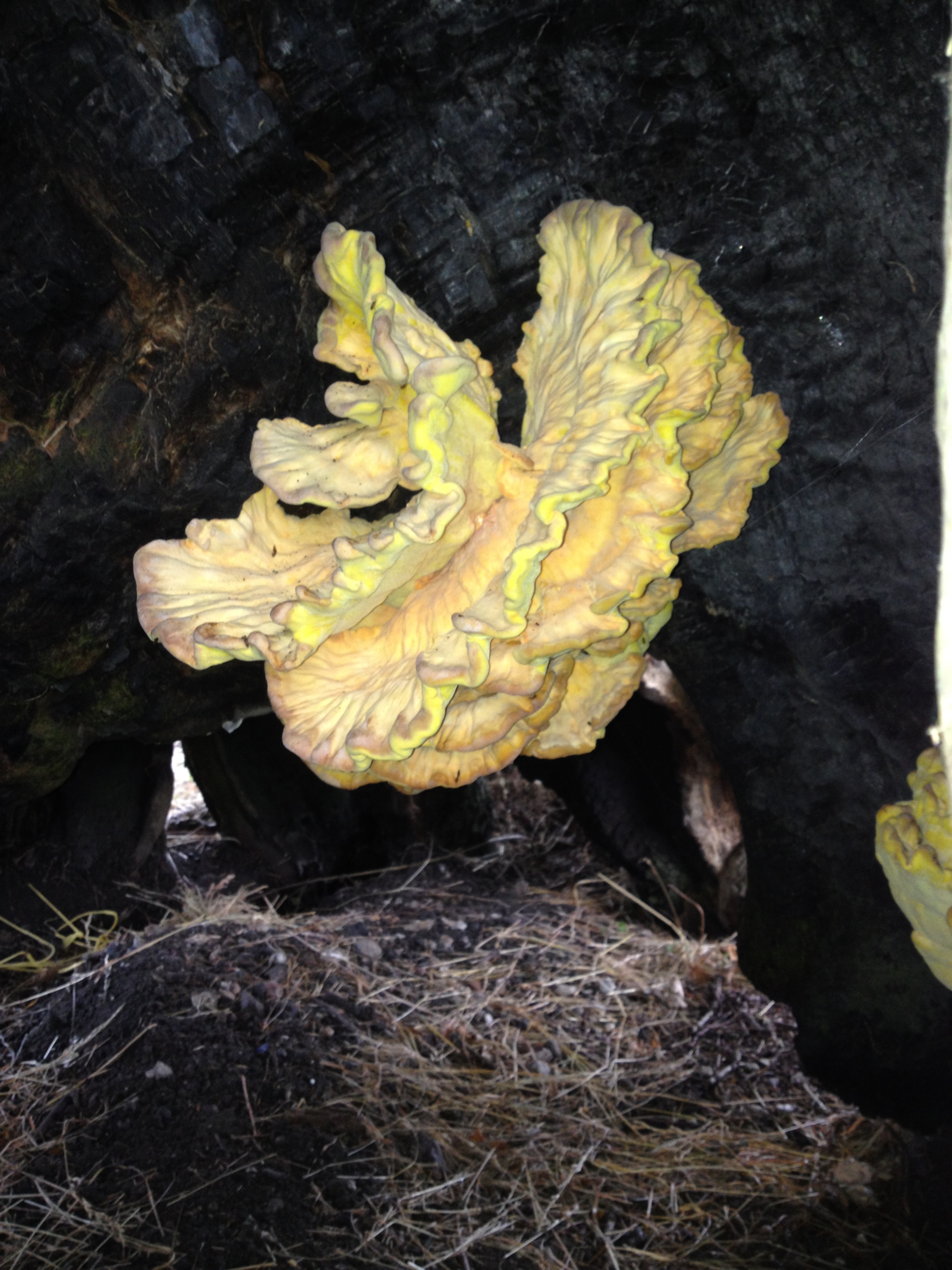
The bark is thick and fissured as shelves of mismatched books. Nuthatches have hammered cobnuts in the gaps, like round copper pennies. Between the two trunks the buttress forms a broad back or bench with a small ferny pool a saddle would fit over. The moss either side of it is worn a threadbare velveteen from climbing, leaning and sitting on. There are shinier patches of grease and chestnut hair, where the pony has scratched his neck. The canopy soars, the trunks and branches embossed with moss and lichens and burrs sprouting twigs, like hairs from moles. Kestrels nested in it this spring, but the canopy is so vast, I could not spot exactly where.
I asked The Woodland Trust how I’d measure and age such a tree, and with their advice, borrowed a long fabric tape measure and fitted it around the tree’s girth before it divided. At 7m, The Woodland Trust’s ready reckoner made the tree somewhere in the region of 600yrs old. Along with several other local trees, it would have been part of the great Savernake Forest just down the road near Marlborough, where Henry VIII courted Jane Seymour. Britain’s only privately-owned ancient forest, it is however leased to the Forestry Commission on a 999-year basis and shut to the public just one day a year, in order to remain ‘private’. It is well known for its lion’s share of ancient, veteran trees: Big Belly Oak, King of Limbs, Cathedral and Spider Oak. The great Duke’s Vaunt once sported a door, lock and key and could shelter ‘twenty boys’. Our ‘Walking Oak’ is 400yrs younger than these greats, yet may have been around four Henry’s before the Eighth was even born.
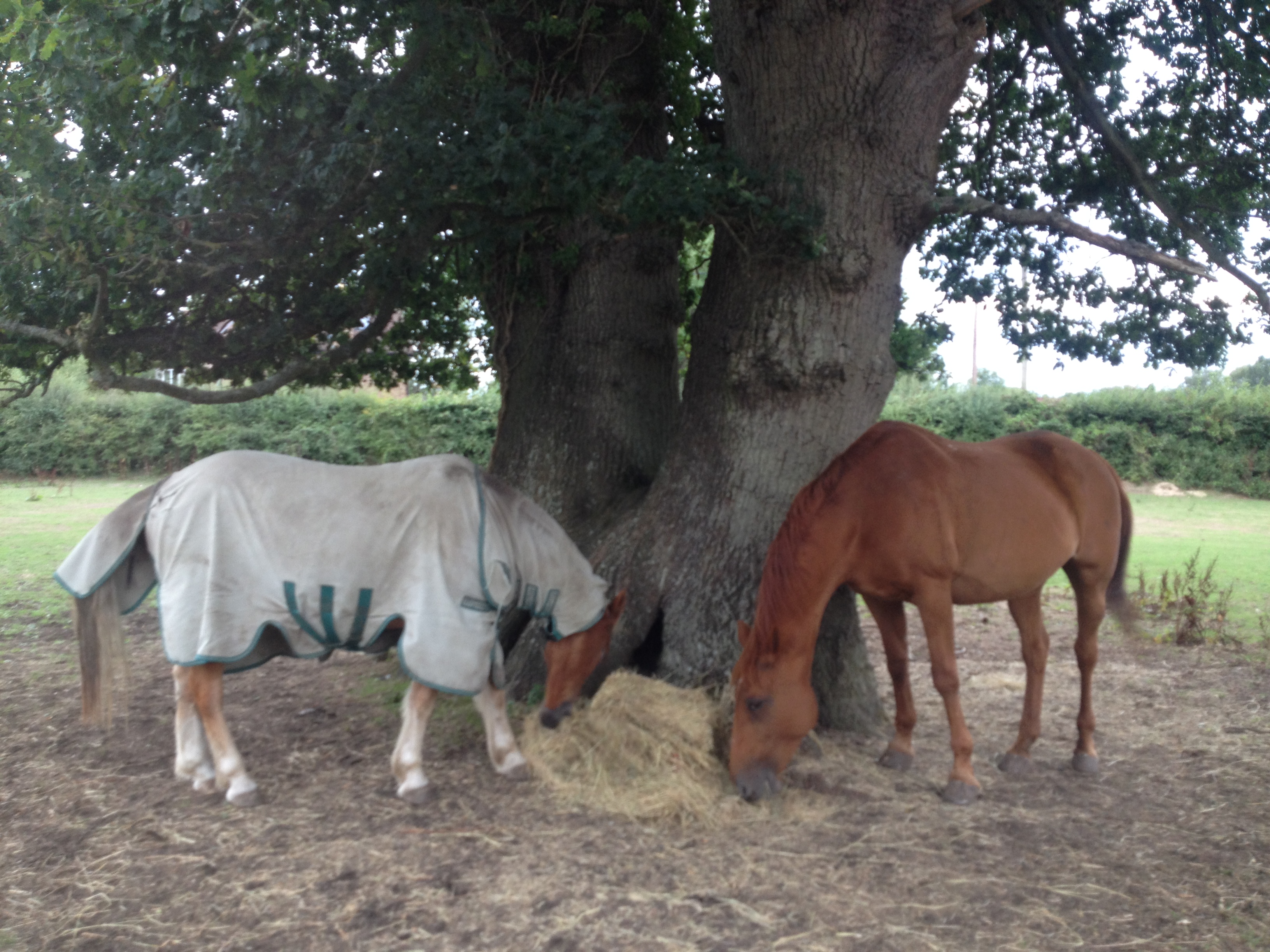
The horses stand beneath it now, nose to tail, swishing flies, nibbling at the ivy bark growing up it, in a scene from an Alfred Munnings painting. Their predecessor is buried fondly beneath the tree. I have rubbed several years’ worth of mistletoe berries on the lower branches, but so far, the tree is having none of that. Perhaps it has seen too much and knows the full weight of betrayals.
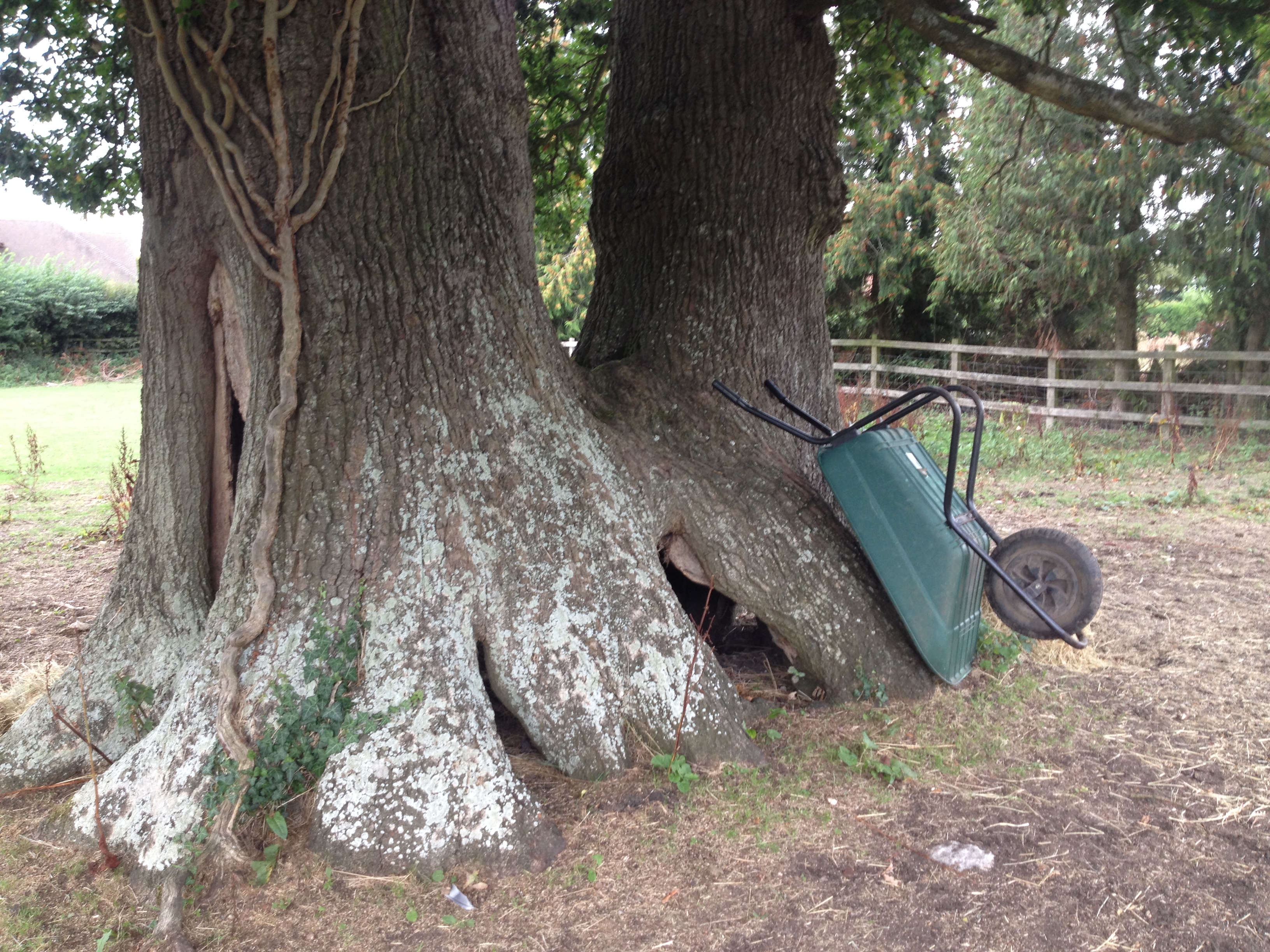
It’s the first tree I check on after a storm. Before I go, I pat the horses’ necks and the tree’s ‘saddle’ with more respect than usual. It gives nothing away, but its solidity and steadiness are a comfort.
Leave a Reply to Helen HCancel reply